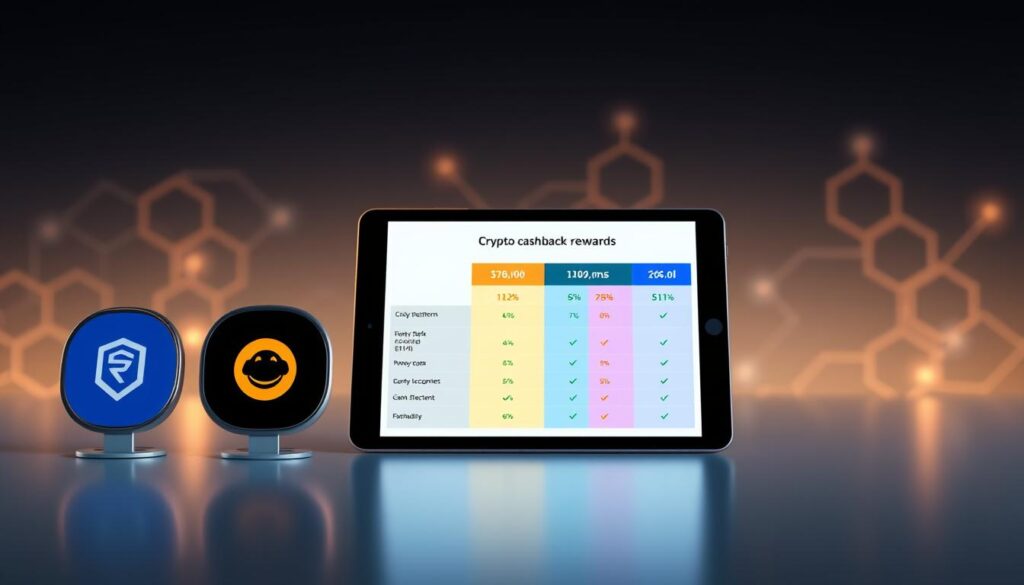Now Reading: Crypto Mining Hardware: Top Picks for Miners
- 01
Crypto Mining Hardware: Top Picks for Miners
Crypto Mining Hardware: Top Picks for Miners

The digital currency landscape continues to evolve, demanding smarter equipment choices for those involved in blockchain validation. With energy costs rising and competition intensifying, selecting the right tools can mean the difference between profit and loss in today’s market.
Modern operations require careful evaluation of three core factors: processing power, electricity efficiency, and operational costs. Machines like the Bitmain AntMiner S19 XP Hydro demonstrate how advanced cooling systems boost performance while reducing noise. Meanwhile, budget-friendly models such as the Canaan Avalon Nano 3 offer accessible entry points for smaller-scale setups.
This guide examines eight leading solutions for Bitcoin validation activities in 2025. From hydro-cooled giants exceeding $6,000 to compact devices under $500, each option serves specific needs. We’ll explore how features like hash rates above 350 TH/s compare to quieter 33dB alternatives designed for residential use.
Understanding these variables helps operators build sustainable strategies. Whether optimizing industrial facilities or repurposing heat output for home use, the right equipment aligns with both technical requirements and financial goals.
Key Takeaways
- Hash rates range from 4 TH/s to 366 TH/s across different models
- Power efficiency varies significantly, with some units using 750W versus 7,283W
- Entry-level devices start below $500, while premium systems cost over $6,800
- Noise levels differ dramatically, from silent hydro models to 75dB air-cooled units
- Specialized options serve dual purposes like space heating alongside validation
Understanding the Crypto Mining Landscape
Blockchain validation processes now dictate hardware requirements more than ever before. Operators must navigate shifting market conditions while balancing technical specifications with economic realities. Three critical elements shape success: equipment capabilities, operational costs, and network dynamics.

Market Trends and Profitability Factors
Network difficulty adjustments and energy prices create constant pressure on profit margins. Recent data shows electricity costs account for 60-70% of operational budgets in U.S.-based operations. Consider these evolving factors:
- Global hash rate increases averaging 5% monthly
- Regional power price disparities exceeding 300%
- Regulatory shifts impacting tax incentives
Volatile cryptocurrency values add complexity to ROI calculations. Operations using outdated equipment face 80% faster obsolescence compared to 2020 standards.
The Role of ASICs in Modern Operations
Application-Specific Integrated Circuits dominate blockchain validation through unmatched processing capabilities. These devices solve complex algorithms 50x faster than GPU-based alternatives while using 40% less power. Key advantages include:
- Hash rates exceeding 350 TH/s in premium models
- Energy consumption ratios below 30J/TH
- Three-year lifespan with proper maintenance
Modern ASIC designs now incorporate adaptive cooling systems that reduce noise by 65% compared to previous generations. This technological leap enables residential installations previously deemed impractical.
Top Crypto Mining Machines Reviewed for Maximum Profitability
Selecting optimal validation equipment requires balancing raw power with operational costs. Leading manufacturers now push boundaries with specialized processors that deliver unprecedented efficiency. This analysis compares five market leaders using real-world performance data and energy metrics.

Performance Metrics and Machine Specs
The Bitmain Antminer S21 XP dominates with 270 TH/s output – equivalent to processing 270 trillion calculations per second. Its 13.5 J/TH efficiency outperforms competitors by 10%, though its 75dB noise demands industrial settings. Key specifications across models:
- Antminer S21 Pro: 234 TH/s at 3,510W (15 J/TH)
- WhatsMiner M50S++: 162 TH/s with 20.7 J/TH ratio
- Antminer L9: Specialized 14 TH/s for alternative algorithms
Price and Efficiency Comparisons
Entry-level devices like the $4,200 Antminer S21 offer accessible entry points, while premium models justify higher costs through energy savings. Consider these critical ratios:
- $0.021 per TH/s (S21 XP) vs $0.026 (S21 Pro)
- 3-year electricity savings: $8,100 model vs $4,000 unit
- 72dB vs 75dB models: 40% cooling cost difference
Operators in high-power-cost regions should prioritize J/TH ratings. The S21 series demonstrates how advanced chipsets reduce consumption by 18% compared to previous generations, directly impacting long-term ROI.
Key Performance Metrics in Bitcoin Mining Operations
Operators must analyze specific benchmarks to maintain profitable activities. Three primary factors determine equipment effectiveness: processing capacity, energy use, and environmental impact.
Hash Rate and Energy Consumption Insights
Hash rate measures how many calculations a device performs each second. Machines exceeding 300 TH/s solve blockchain equations faster but demand premium pricing. Higher outputs increase reward potential yet raise upfront costs by 40-60% compared to mid-range options.
Energy efficiency separates profitable operations from money pits. Units consuming 20 joules per terahash (J/TH) slash electricity costs by 35% versus older 30 J/TH models. A 3,500W device running 24/7 adds $280 monthly to power bills in areas with $0.12/kWh rates.

Noise Levels and Installation Considerations
Industrial-grade devices hit 75dB – louder than most dishwashers. Residential setups need sound-dampening enclosures or dedicated rooms. Proper ventilation prevents overheating, which can throttle power consumption efficiency by 15%.
Circuit breakers must handle sudden surges from high-TH/s units. Compact miners under 33dB work in apartments but produce 30% less output. Always verify electrical capacity and airflow space before deployment.
Balancing these metrics ensures sustainable mining operations. Prioritize TH/s-to-watt ratios in regions with volatile energy prices, and match noise level tolerances to your environment’s constraints.
Expert Advice on Crypto Mining Hardware Selection
Strategic equipment choices determine long-term success in blockchain operations. Professionals emphasize aligning machine capabilities with operational goals while managing budget constraints. EZ Blockchain specialists highlight three decision pillars: performance thresholds, energy infrastructure, and scalability requirements.
Balancing Cost with Operational Efficiency
High-output ASICs deliver faster returns but demand significant upfront investment. Consider these factors when evaluating options:
- Electricity rates exceeding $0.15/kWh favor energy-efficient miners under 25 J/TH
- Hosting facilities often provide better cooling for high-performance units
- Entry-level rigs suit testing strategies before scaling operations
Consultants analyze break-even points using localized power costs and network difficulty projections. This prevents overspending on unnecessary processing power.
Home Mining vs. Professional Hosting Setups
Residential operations work best with sub-40dB devices under 2,000W consumption. Professional services eliminate noise concerns while offering:
- Industrial-grade ventilation systems
- Bulk electricity rates up to 60% lower than residential
- 24/7 technical support for mining rigs
Seasoned advisors like those at EZ Blockchain help clients compare total ownership costs. Their tailored solutions combine hardware selection with infrastructure optimization for maximum return investment.
Innovative Trends and Developments in Mining Machines 2025
Technological breakthroughs are redefining operational capabilities in blockchain validation systems. Manufacturers now deliver devices balancing raw power with environmental adaptability, setting new industry standards.
Emerging ASIC Technologies and Future-Proofing
The Bitmain Antminer S21 series leads this revolution, with its XP model achieving 270 TH/s at 13.5 J/TH efficiency. These machines slash energy use by 18% compared to 2023 models while handling multiple algorithms. For those tracking 2025 developments, recent analysis of mining machines 2025 reveals how liquid cooling extends device lifespans by 40%.
New ASIC designs like the AL1 Pro target alternative currencies through Blake3 support, diversifying revenue streams. Advanced thermal management keeps noise below 75dB even at peak performance. This aligns with growing demand for adaptable systems in fluctuating markets.
Operators prioritizing efficiency now use mining software that auto-adjusts power settings based on real-time profitability. Such tools complement hardware advances, creating resilient operations. Explore strategic equipment investments to maximize returns as network complexities increase.
FAQ
What factors determine profitability in Bitcoin mining?
Profitability depends on electricity costs, machine efficiency, and network difficulty. High hash rate and low energy consumption, like Bitmain Antminer S21’s 200 TH/s at 20W/TH, maximize returns. Market volatility and pool fees also impact gains.
How do ASIC miners outperform GPUs in mining operations?
ASICs (Application-Specific Integrated Circuits) are designed for specific algorithms like SHA-256, offering 50–100x higher efficiency. Machines like Bitmain Antminer S21 Pro achieve 335 TH/s, while GPUs struggle to compete in both speed and power usage.
What specs should I prioritize when choosing a mining machine?
Focus on hash rate (e.g., 200+ TH/s), energy efficiency (under 25W/TH), and upfront cost. Noise levels (below 75 dB) and cooling requirements also matter for home setups. Compare models like Whatsminer M63S for balanced metrics.
Is home mining viable compared to professional hosting?
Home setups work for small-scale miners with low electricity rates but face challenges like noise and heat. Professional hosting offers scalability, optimized cooling, and bulk power discounts, improving long-term ROI for high-output rigs.
How can I future-proof my mining hardware investment?
Opt for upgradable ASICs with modular components, like Canaan AvalonMiner 1266. Monitor industry shifts toward eco-friendly designs and emerging algorithms. Diversify into machines supporting multiple protocols to hedge against market changes.
What tax implications apply to cryptocurrency mining gains?
The IRS treats mined coins as taxable income at fair market value upon receipt. Record-keeping tools like CoinTracker help track earnings and losses. Consult a tax professional to navigate deductions for equipment and electricity costs.












